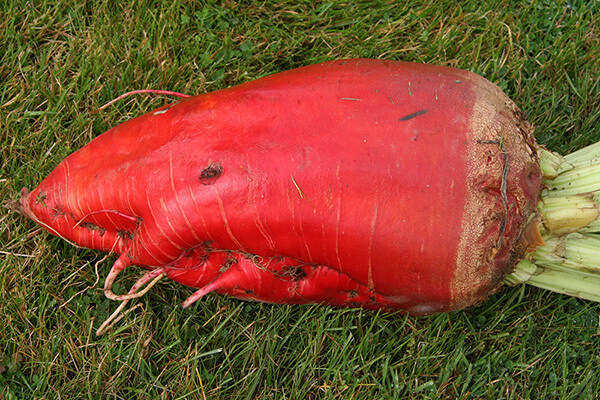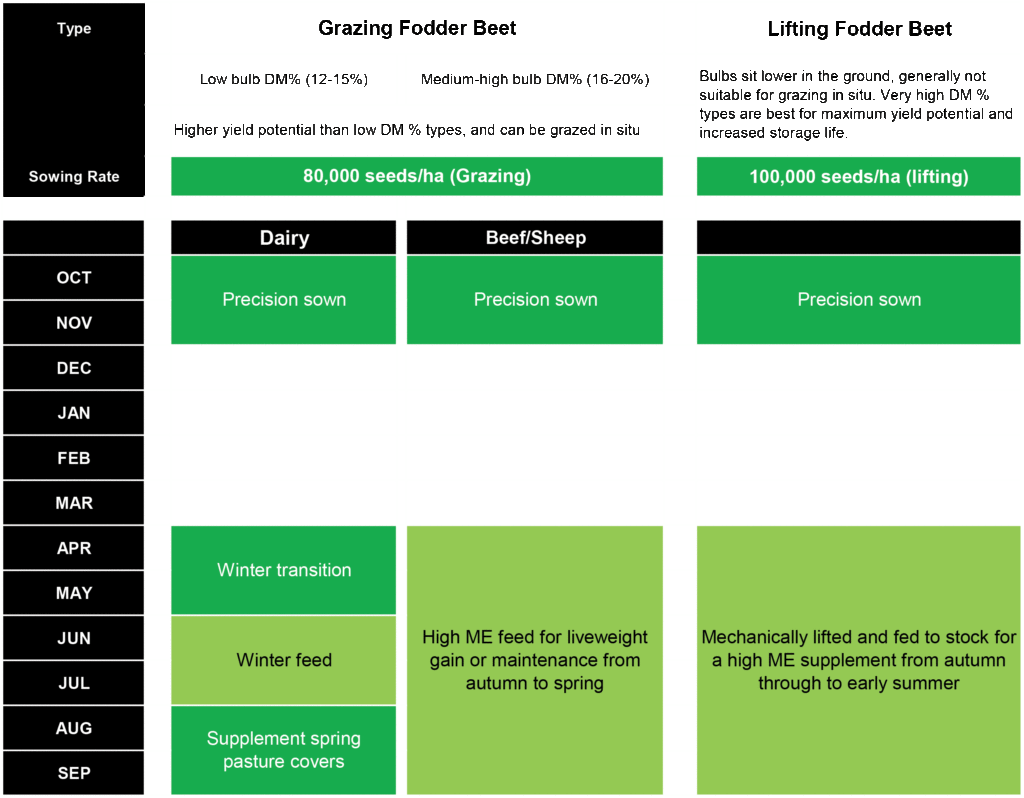Fodder beet is a demanding crop, but if managed well it can be extremely high yielding. So it’s important to select the correct fodder beet variety to fit your farms requirements.
Our range of Fodder Beet varieties have been bred to be grazed in-situ, or be lifted and fed whole or chopped.
[table width =”60%” style =”table-hover” responsive =”false”]
[table_head]
[th_column][/th_column]
[th_column]Fortimo[/th_column]
[th_column]Geronimo[/th_column]
[/table_head]
[table_body]
[table_row]
[row_column][/row_column]
[row_column]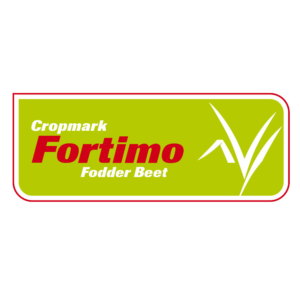
[row_column]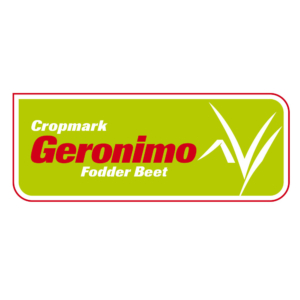
[/table_row]
[table_row]
[row_column]Description[/row_column]
[row_column]High yielding monogerm fodder beet with large red tankard shaped bulb[/row_column]
[row_column]Newly released monogerm fodder beet with a large yellow – orange tankard shaped bulb[/row_column]
[/table_row]
[table_row]
[row_column]Sowing season[/row_column]
[row_column]Spring[/row_column]
[row_column]Spring[/row_column]
[/table_row]
[table_row]
[row_column]Sowing rate (seeds/hectare)[/row_column]
[row_column]80,000 – 100,000[/row_column]
[row_column]80,000 – 100,000[/row_column]
[/table_row]
[table_row]
[row_column]Maturity (days to grazing)[/row_column]
[row_column]200+[/row_column]
[row_column]200+[/row_column]
[/table_row]
[table_row]
[row_column]Bulb % above ground[/row_column]
[row_column]14-16 %[/row_column]
[row_column]15-17 %[/row_column]
[/table_row]
[table_row]
[row_column]Dry matter %[/row_column]
[row_column]+/- 45%[/row_column]
[row_column]+/- 45%[/row_column]
[/table_row]
[table_row]
[row_column]Bolting tolerance[/row_column]
[row_column]Very good*[/row_column]
[row_column]Very good*[/row_column]
[/table_row]
[table_row]
[row_column]Disease tolerance[/row_column]
[row_column]Very good[/row_column]
[row_column]Very good[/row_column]
[/table_row]
[table_row]
[row_column]*Subject to management & climatic conditions[/row_column]
[/table_row]
[/table_body]
[/table]
[table width =”60%” style =”table-hover” responsive =”false”]
[table_head]
[th_column][/th_column]
[th_column]Betimo[/th_column]
[th_column]Lactimo[/th_column]
[/table_head]
[table_body]
[table_row]
[row_column][/row_column]
[row_column]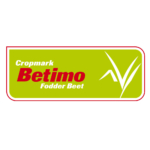
[row_column]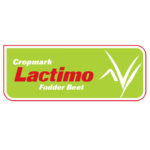
[/table_row]
[table_row]
[row_column]Description[/row_column]
[row_column]High yielding monogerm fodder beet with large red tankard shaped bulb[/row_column]
[row_column]Newly released monogerm fodder beet with a large yellow – orange tankard shaped bulb[/row_column]
[/table_row]
[table_row]
[row_column]Sowing season[/row_column]
[row_column]Spring[/row_column]
[row_column]Spring[/row_column]
[/table_row]
[table_row]
[row_column]Sowing rate (seeds/hectare)[/row_column]
[row_column]80,000 – 100,000[/row_column]
[row_column]80,000 – 100,000[/row_column]
[/table_row]
[table_row]
[row_column]Maturity (days to grazing)[/row_column]
[row_column]200+[/row_column]
[row_column]200+[/row_column]
[/table_row]
[table_row]
[row_column]Bulb % above ground[/row_column]
[row_column]14-16 %[/row_column]
[row_column]15-17 %[/row_column]
[/table_row]
[table_row]
[row_column]Dry matter %[/row_column]
[row_column]+/- 45%[/row_column]
[row_column]+/- 45%[/row_column]
[/table_row]
[table_row]
[row_column]Bolting tolerance[/row_column]
[row_column]Very good*[/row_column]
[row_column]Very good*[/row_column]
[/table_row]
[table_row]
[row_column]Disease tolerance[/row_column]
[row_column]Very good[/row_column]
[row_column]Very good[/row_column]
[/table_row]
[table_row]
[row_column]*Subject to management & climatic conditions[/row_column]
[/table_row]
[/table_body]
[/table]
Lifting or grazing fodder? What is the difference?







